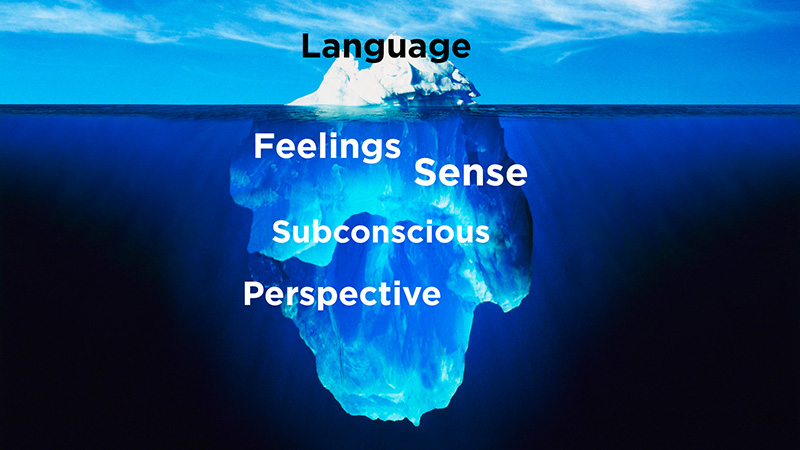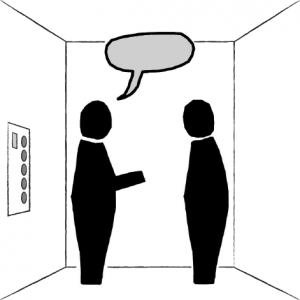What is Framing, and Why is it Relevant to Your Work?

A few trusted formulas for story framing are followed within journalism—the “Inverted Pyramid” organizes a story by lede, facts, and background details into an inverted pyramid shape (here’s where the term “burying the lede” comes from!). In other words, the story elements narrow in importance from the pyramid’s base to its tip.
This formula works, which is why journalists worldwide rely on it to quickly communicate the facts of a story as it happens. And though this style of reporting is effective, it’s not always interesting. Outside of hard-hitting news, the stories and messages that are framed in new and unique ways are the ones that really grab us.

Beneath the surface
Writer Ernest Hemingway coined a writing theory called “The Iceberg Technique.” This theory uses the visual metaphor of an iceberg to communicate the depth of what is conveyed beneath the surface of language with effective story structure. Hemingway’s words set precedent for this idea:
“The dignity of the movement of an iceberg is due to only one eighth of it being above water.”
In essence, only a small fraction of a story—like an iceberg’s tip peeking above water—is revealed by the words on a page, while the bulk of the story lies beneath the surface. The remaining underwater mass of the iceberg (or message) is what’s integrated into the structure of a story.

Swimming in information
We navigate through a massive amount of information each day—a vast sea of stories and messaging that enter every angle of our periphery—through media and advertisements, to public transportation and road signage, infrastructure, and our communication with others. Individuals and organizations alike are prompted to present ourselves across an array of platforms to various audiences each day. The immediacy of the internet and digital communication have made the dreaded “elevator” speech a necessity. The question of how we can present ourselves and our work in a clear and concise manner that doesn’t sacrifice authenticity or personality is crucial to any organization’s messaging.

What’s your elevator speech?
The elevator speech is a type of framing most are all too familiar with. And whether your spiel is perfectly memorized on autopilot or you struggle in your explanation, you’ll likely adapt it according to who’s riding with you—and with good reason! The same idea should apply for communicating an organization’s message. Here are some of the common pitfalls of story framing used by nonprofits in their “elevator speeches”:
- Using “funder lingo” instead of language accessible to a public audience
- Recycling stale or “safe” descriptions (think of unengaging capability statements)
- Lack of creativity and personality that comes across as inauthentic
- ”Burying the lede”—the fundamental values of your work and mission
The subconscious components of your story—“underwater” elements like sense, feeling, and perspective—are what set your organization apart from others. Fresh approaches to messaging through innovative story framing inspire and make a memorable impact on your audience. Some examples of useful storytelling frameworks for nonprofits include:
- Individual impact
- From problem to solution
- “News peg”—use the “hook” from current events
- What we believe
Which of these feel familiar to your own? How can you adapt your organization’s story to make it more unique? Just like an elevator conversation, framing a great story isn’t about hitting keywords and targets, it’s about communicating your purpose in creative and authentic ways. And that’s not just for elevators! Rethinking your brief pitch demonstrates the variety of unique ways you can reframe a story.
